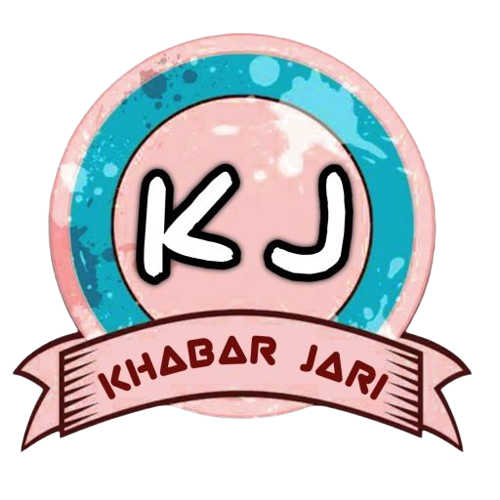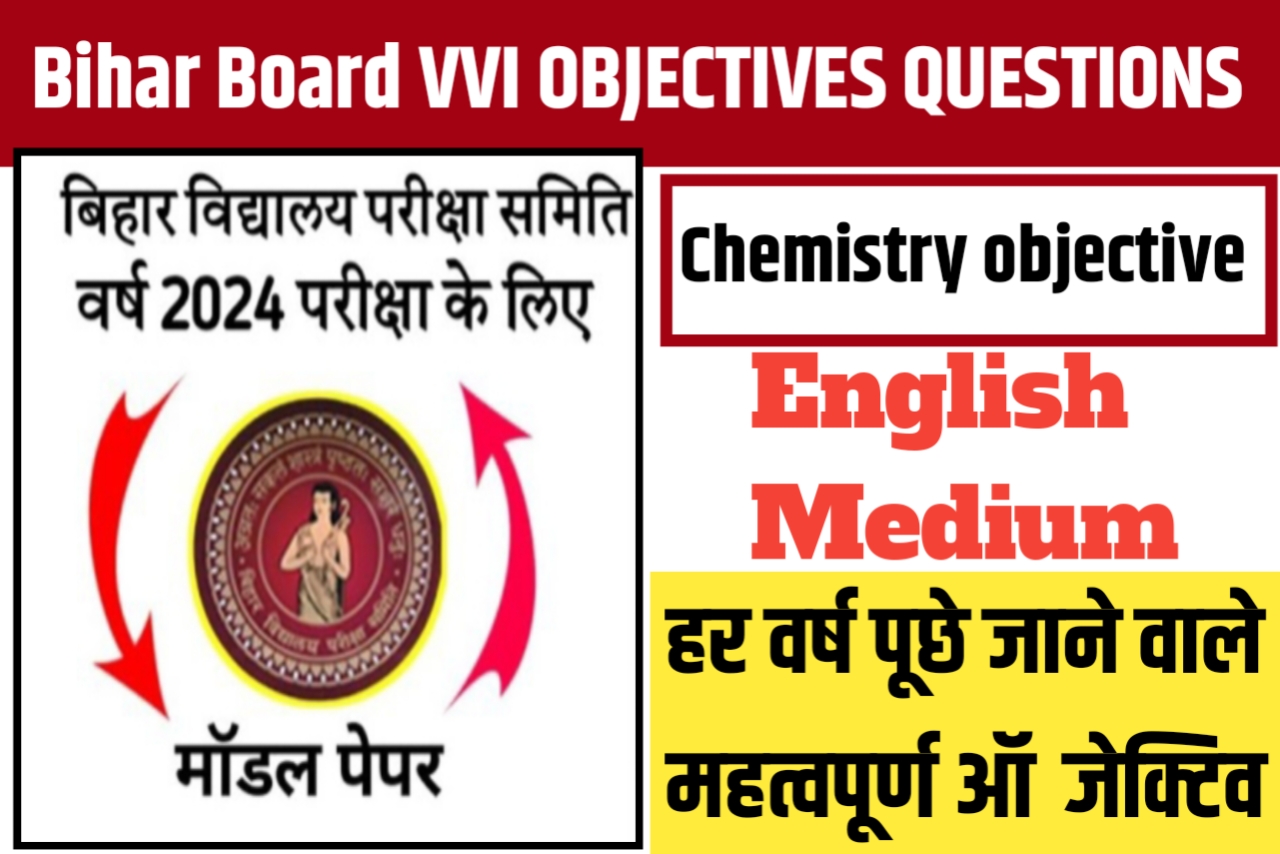Chemistry Objective Question
Objective question Board Exam 2024
1. Which is not affected by temperature ?
a. Normality
b. Molality
c. Molarity
d. Formality
Ans – ( B )
2. Which one of the following is a colligative property ?
a. Viscosity
b. Surface tension
c. Refractive index
d. Osmotic pressure
Ans – ( D )
3. The Electromotive fore ( EMF ) of the ell for the cell reaction at equilibrium state is
a. positive
b. zero
c. negative
d. non of these
Ans – ( C )
4. Which of the following is a colligative property of solution ?
a. Osmosis
b. Surface tension
c. Conductivity
d. Half-life period
Ans – ( A )
5. Which of the following is the property of ideal solution ?
a. Obeys Raoult’s law
b. Does not obey Raoult’s law
c. Both ( A ) and ( B )
d. None of these
Ans – ( A )
6. The boiling point of water decreases at high mountains because
a. Temperature is low
b. Atmospheric pressure is low
c. Pressure is high
d. More air
Ans – ( B )
Chemistry Objectives Question 2024
7. By osmosis semipermeable membrane ( S.P.M. ) allows to pass
a. Solute molecules
b. Solvent molecules
c. Complex ion
d. Simple ion
Ans – ( B )
8. Which of the following is not a colligative property of solu-tion ?
a. Depression of freezing point
b. Elevation of Boiling point
c. Relative lowering vapour pressure
d. Optical activity
Ans – ( D )
9. Osmotic pressure can be increased by
a. Increasing temperature
b. Decreasing temperature
c. Increasing volume
d. None
Ans – ( A )
10. Atomic mass is equal to
a. Number of electrons of an atom
b. Sum of the no. of electrons and protons of an atom
c. Sum of the no. of neutrons and protons of an atom
d. none of these
Ans – ( B )
11. Which among the following is a colligative property ?
a. Boiling point
b. Vapour pressure
c. Osmotic pressure
d. Freezing point
Ans – ( C )
12. An example of an electrolyte is
a. Sugar
b. Sodium acetate
c. Urea
d. Benzene
Ans – ( B )
13. Which concentration unit is independent of temperature ?
a. Molarity
b. Mass Volume percentage
c. Molately
d. Normality
Ans – ( C )
14. At constant temperature the isotonic solution have same
a. Molality
b. Molar concentration
c. Normality
d. None of these
Ans – ( B )
15. Molal depression constant depends on-
a. Nature of the solute
b. Nature of the solvent
c. Heat of the solution
d. Vapour pressure of the solution
Ans – ( B )
Most Vvi Chemistry Objective Question
16. Which of the following units is useful in relating concentration of solution with its vapour pressure ?
a. Mole fraction
b. Parts per million
c. Mass percentage
d. Molality
Ans – ( A )
17. For the determination of the molar mass of colloids, which colligative property of polymers and proteins is used ?
a. Effusion pressure
b. Atmospheric pressure
c. Osmitic pressure
d. Turgor pressure
Ans – ( C )
18. In which of the following 0.1 M aqueous solution will have lowest freezing point ?
a. Potassium sulphate
b. Sodium Chloride
c. Urea
d. Glucose
Ans – ( A )
19. The Van’t Hoff factor for a solute, that associates in solution is
a. Zero
b. More than 1
c. Less than 1
d. 1.0
Ans – ( C )
20. Backmann’s thermometer is appropriate for the calculation of
a. Boiling point
b. Difference in temperature
c. Freezing point
d. Absolute temp.
Ans – ( B )
Objectives Type Questions
21. Which one of the following is an example of an amorphous solid ?
a. NaCL
b. ZnS
c. Glass
d. SiC
Ans – ( C )
22. An example of amorphous solid is
a. Diamond
b. Graphite
c. Salt
d. Rubber
Ans – ( D )
23. When an electron occupies the empty space of negatively change ions, then the defect in crystal is
a. Schottky defect
b. Frenkel defect
c. F-Centre
d. None of these
Ans – ( C )
24. In hep unit cell, number of atoms is
a. 4
b. 6
c. 12
d. 7
Ans – ( B )
25. Which of the following is a crystalline Solid ?
a. Diamond
b. Glass
c. Rubber
d. All of these
Ans – ( A )
26. Which of the following is an amorphous solid ?
a. Graphite
b. Glass
c. Diamond
d. All of these
Ans – ( B )
27. Crystals are
a. Four types
b. Three types
c. Seven types
d. All
Ans – ( B )
28. Which of the following in an amorphous solid ?
a. Sugar
b. Diamond
c. KCL
d. Glass
Ans – ( D )
Chemistry Objectives Question Class 12
29. In Which of the following pairs of structure are tetrahedral as well as octahedral voids respectively ?
a. bcc and FCC
b. hep and simple cubic
c. hep and CCP
d. bcc and hep
Ans – ( C )
30. The coordination number of a metal crystallizing in hexagonal close packed ( hep ) structure is
a. bcc and fcc
b. hep and simple cubic
c. hep and ccp
d. bcc and hep
Ans – ( C )
31. The coordination number of a metal crystallizing in hexagonal close packed ( hep ) structure is.
a. 12
b. 8
c. 4
d. 6
Ans – ( A )
32. The number of basic crystal system is
a. 4
b. 6
c. 7
d. 8
Ans – ( D )
33. In fcc cubic cell, an atom at the face centre is shared by
a. 6 unit cell
b. 1 unit cell
c. 2 unit cell
d. 4 unit cell
Ans – ( C )
34. Good conductor of electricity and heat is
a. Anthracite coke
b. Diamond
c. Graphite
d. Charcoal
Ans – ( C )
35. Criteria for purity of organic solid is
a. boiling point
b. melting point
c. specific gravity
d. none of these
Ans – ( B )
36. Which one of the following is non-crystalline or amorphous ?
a. Diamond
b. Graphite
c. Glass
d. Common Salt
Ans – ( C )
37. Which has hep crystal structure ?
a. NaCL
b. CsCl
c. Zn
d. RbCl
Ans – ( C )
Bihar Board Chemistry Objective Question Class 12
38. Which of the following will have metal deficiency defect ?
a. NaCl
b. FeO
c. KCl
d. ZnO
Ans – ( B )
39. The co-ordination number of body centred unit cell is
a. 4
b. 6
c. 8
d. 12
Ans – ( C )
40.:The highest ferromagnetism is found in
a. Fe
b. Ni
c. Co
d. None
Ans – ( A )
41. Schottky defect is found in
a. NaCl
b. KCl
c. CsCl
d. All
Ans – ( D )
42. The resistance of mercury becomes zero at
a. 4K
b. 10K
c. 20K
d. 25K
Ans – ( A )
43. The substance used in solar cell contains
a. Cs
b. Si
c. Sn
d. Ti
Ans – ( B )
44. The co-ordination number in bcc is
a. 8
b. 6
c. 4
d. 12
Ans – ( A )
45. Frenkel and Schottky defects both are in
a. NaCl
b. AgCl
c. AgBr
d. KCL
Ans – ( C )
| Home Page | Click Here |
| More Questions | Click Here |
Telegram Group Join Now
Bihar Board Objective Question, Class 12 Bihar Board Exam Questions, Bihar Board Viral Questions 2024, Viral Bihar Board 2024 Chemistry Question, Bihar Board Exam 2024, Class 12 Inter Exam Questions, Bihar Board Inter Chemistry Viral Questions,

